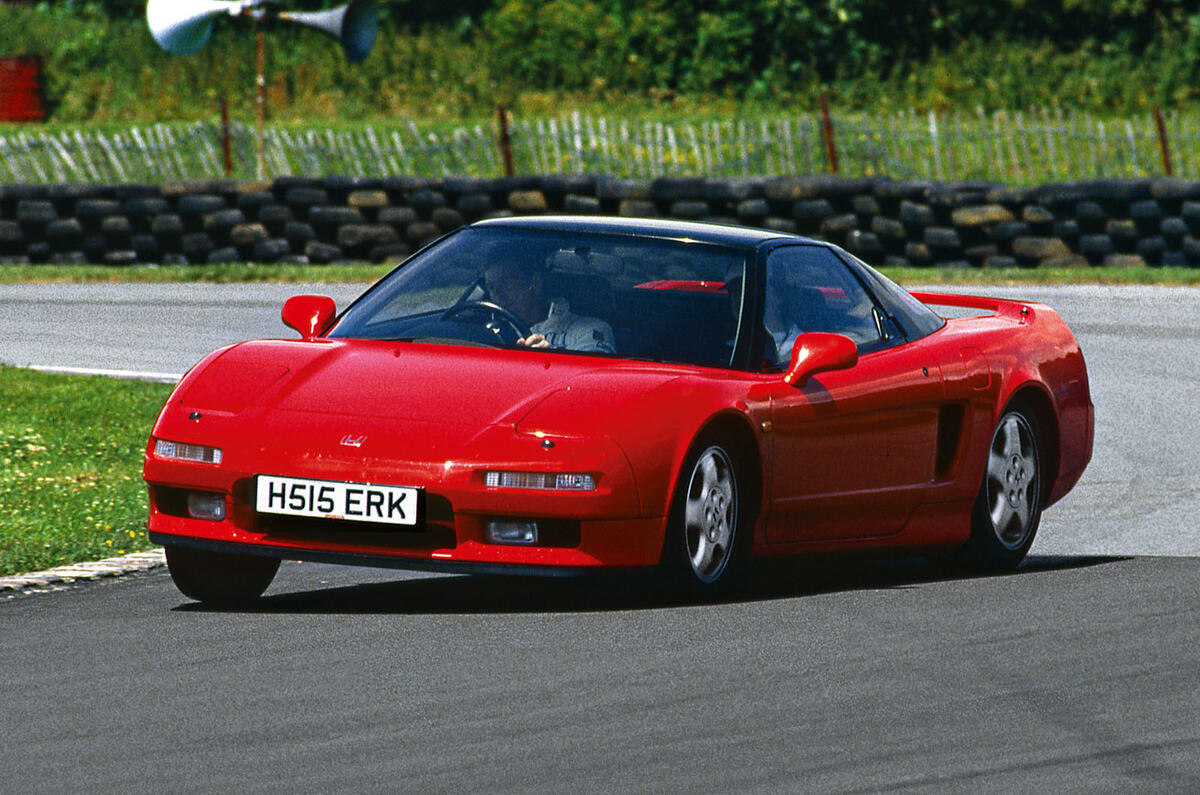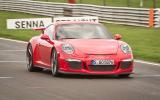Twenty-five years ago, a group of Autocar & Motor staffers gathered together at Castle Combe to find the identity of Britain’s Best Driver’s Car.
I’d like to say that the idea was to give readers a definitive insight into the finest-handling cars on sale but, as the uninvited office junior, I can tell you that it was just a jolly. But not for long. That year, 1989, we crowned our first BBDC champion, came up with a format now copied by countless others and, just for good measure, wrote off a Ferrari.
What I have loved about BBDC ever since I blagged my way to Castle Combe for round two in 1990 is that it always – and I do mean always – retains the ability to surprise.
You can test and analyse every new sporting car on sale and use this knowledge to make a prediction, sit back and watch BBDC blow your preconceptions to pieces. That year it was won by a Mazda MX-5.
It is the classless nature of BBDC that continues to form a large part of both its enduring appeal and its importance. You still can’t look at the badge, the power figure and the price and work out the winner; were that the case in 2012, the Toyota GT86 would have come last by so much that we’d have had to put it in a garage by itself to spare it further embarrassment.
Instead, it won, beating a Porsche Cayman R and a Lotus Exige S, among others.
What’s never changed despite holding the event on road and on track, at locations as far removed as the south of France and the Isle of Man, are the qualities we’re looking for in a winner – and it’s not the car with the most power, the most grip or the fastest lap time.
Primarily, this is a test of handling, a subject that, far from being merely about tyres, suspension and steering, is affected by every area of a car’s dynamic endeavour: engine, gearbox, brakes… as well as its weight, weight distribution and the number and location of the driven wheels. If you attempted to express it as a mathematical formula, you could nail blackboards to every wall in the room and still run out of space.
But if you just sit in a car and drive, it’s surprisingly easy. Handling is simply a measure of a car’s ability to execute the instructions of its driver. Everything else stems from that.
Does it go where you point it and when you pointed it there? How much confidence does it inspire? Do you feel like part of the machine or it like part of you? We’ve had fantastically fast cars that are pussycats to drive – often V12 Lamborghinis, curiously enough – and others that have scared us stupid.
The closest I’ve ever come to binning a car at a BBDC day was in a Dodge Viper at a wet Goodwood where a fluked lock-to-lock catch at over 100mph saved my skin. I’d have minded less were the car not travelling in a straight line at the time…
The format has evolved over the years and we still like to mix up our locations. In 1992 we had just seven cars to judge, in 2003 a barely believable 26.
We also used to drag famous names along to help sell the story and give us the courage of our convictions, but over time we’ve seen that when it comes to judging a sporting car’s fitness for purpose, our verdicts are as reliable as any.
We often find a turkey clucking unexpectedly in the coop. I remember the Alfa Romeo Brera being quite extraordinarily bad on the track.
The first Black Series Mercedes – the SLK55 of 2007 – made us wonder what AMG had been thinking of, but I think that the worst, relative to expectations, was the Ferrari 348tb of 1993. Initially, some of us thought it our fault that we couldn’t contain its vicious, unprovoked oversteer. It wasn’t. Rubbish Ferraris are incredibly rare, but that day the 348 showed us that they do exist.
We did think about getting all the winners from 25 years of BBDC on one track to name the king of kings, but we were stopped by the impossibility of ensuring every car was in factory condition. One tired shock absorber could send a car from first to last and render the results meaningless.
So you’ll have to put up with a gut feeling. My gut feeling, as it happens. And as the bloke who’s been to more BBDCs than anyone else, I guess that will have to do.
Perhaps we should give it to the Honda NSX or Ferrari 550 Maranello, the only cars in the history of BBDC to have successfully defended their title the following year. But I’m not going to.
The greatest achievement I have witnessed came in 2010, where the field included the Ferrari 458, Noble M600, Mercedes-Benz SLS and the Lotus Evora that had won the previous year. And the Porsche 911 GT3 RS not only beat the strongest field we had ever assembled at that time, but also did so without a single dissenting voice from the seven judges.
Next week we shall publish the results of the 26th BBDC, but there’s one secret that I can share with you now: for the anniversary, we are returning to Castle Combe, we will have a Ferrari with us and, this time, none of us writes it off. Allegedly.
Every past winner
Porsche 944 S2 (1989), Mazda MX-5 (1990), Honda NSX (1991), Honda NSX (1992), Porsche 968 Clubsport (1993), Porsche 911 (993) Carrera (1994), Lotus Esprit S4S (1995), Lotus Elise (1996), Ferrari 550 Maranello (1997), Ferrari 550 Maranello (1998), Ferrari 360 Modena (1999), Porsche 911 (996) Turbo (2000), Lotus Elise Series 2 (2001), Lamborghini Murcielago (2002), Mazda MX-5 (2003), Noble M400 (2004), Porsche 911 (997) Carrera S (2005), Porsche Cayman S (2006), Audi R8 (2007), Nissan GT-R (2008), Lotus Evora (2009), Porsche 911 997 GT3 RS (2010), Porsche Cayman R (2011), Toyota GT86 (2012), Porsche 911 (991) GT3 (2013)
Britain’s Best Driver’s Car - 25 years of memories
25 years of numbers - the stats behind our Britain’s Best Driver’s Car tests
Get the latest car news, reviews and galleries from Autocar direct to your inbox every week. Enter your email address below:



















































Add your comment
Turkeys...
Top Gear?
911
What I also notice is that, among the handling classics, there are a few interlopers whose main strengths lie elsewhere (GT-R, R8, 360 Modena) that were perhaps new that year and shone a little brighter in the tester's eyes?